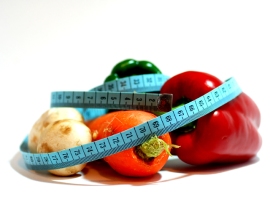Healthy Tips to Prevent Cancer
When you think of the San Antonio Food Bank, canned goods may be the first thing that come to mind. But our mission to “Fight Hunger and Feed Hope” isn’t just about handing out canned goods. Ours is a holistic attempt to eradicate, educate and empower. Our Nutrition, Health and Wellness division is on a mission to educate people about the importance of eating healthy. Sarah Koontz, a registered dietician with the San Antonio Food Bank, shares tips in this week’s blog to cook healthy to prevent cancer.
We often hear about how some lifestyle changes can help prevent our risk of cancer, even including or avoiding certain foods. Did you know there are simple actions you can take in the kitchen to decrease your risk of cancer? Here are four ways you can tweak your cooking methods to get the most out of healthy meals!
Bring out the inner lycopene with heat: Tomatoes, along with guava, pink and red grapefruit and some other red-colored fruits and vegetables, are rich in the healthy cancer-fighting antioxidant lycopene. Cooking tomatoes for a few minutes releases a form of lycopene that is more easily absorbed by our cells than the lycopene found in raw tomatoes. Adding a little bit of olive oil to your cooked tomatoes can increase the amount of lycopene absorbed even more. Some additional powerhouses of lycopene include: watermelon, asparagus, chili powder, and red cabbage.
Garlic: Chop and rest: Chopping garlic enhances its health-promoting phytochemical, allicin, which is responsible for garlic’s distinct pungency and taste. When garlic is whole, alliin, the compound from which allicin is formed, is separated from the enzyme alliinase that helps create it. Cutting garlic allows them to mingle and form allicin. You can chop, slice, mince or press. Heat destroys alliinase so in order to get the most allicin, let crushed garlic stand for about 10-15 minutes before adding it to a hot pan.
A bit of fat for fat-soluble vitamins: Our bodies absorb fat-soluble vitamins with a touch of fat. Cooking and preparing green, red, orange and yellow vegetables with olive oil or other healthy fats found in avocado and nuts helps to increase the absorption of beta-carotene and fat-soluble vitamins, such as vitamins A, E, and K. Most meals will already contain some fat. But next time you make a salad, sprinkle a little olive oil and a small portion of your favorite nuts for more flavor and healthy added crunch.
Add zest to up iron: Green leafy vegetables, beans and other plant foods contain relatively large amounts of a form of iron called non-heme iron, in contrast to the heme iron found in meats. But non-heme iron is not as easily absorbed as heme. Adding lemon or other foods high in vitamin C to vegetables can help increase the amount of iron absorbed. Drinking orange juice after eating a vegetable-filled meal can also help increase iron absorption.
Source: AICR, March 2013.
Interested in re-vamping your health, including your eating habits? Contact us today for more information about our public nutrition education classes offered free to the community. You can click HERE or call us at (210) 431-8351. Start getting healthy today!
Thanks for sharing this post to us. This is really helpful for people to be aware about cancer. In this way, they can prevent this disease.
It is great to know other food banks strive to provide healthy food options and nutrition education to their clients. Great blog, glad we are following!